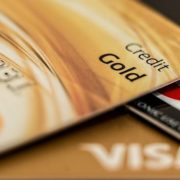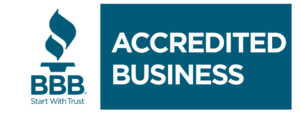Bankruptcy and Credit Card Debt
Bankruptcy has become an increasingly popular option for debtors in the past decade, with experts crediting this rise to the increasing instability of the economy and low-income families. While bankruptcy has traditionally been pursued by those who have lost their job and fallen into overwhelming debt, recent statistics show that it is now an option for those struggling with accumulated credit card debt. It’s important for you, as a consumer, on this issue to be informed before making any decisions that could have serious repercussions. This is why you should try to avoid accumulating too much debt in the first place by making conscious decisions about how you spend money.
What is Bankruptcy?
Bankruptcy is a legal process that allows debtors to withdraw from their debts by declaring bankruptcy. The filing typically occurs before the defendants’ assets are liquidated to pay the creditors. Borrowers retain property ownership and see their income, salary, or Social Security payments garnished. Jurisdictions of law broadly vary relative to the types of debts that can be included in bankruptcy. In the United States, each of the fifty states has laws regarding what debts can be discharged through this process. It allows individuals earning some income to create a repayment plan that gives them up to five years to repay their debts.
A chapter 7 bankruptcy case is a liquidation bankruptcy case that typically takes four to five months to complete. Chapter 7 bankruptcy petitions are filed under federal law and are governed by the federal Bankruptcy Code. The court in which you file your petition will determine whether you qualify for this type of bankruptcy and if it is approved, it is usually effective within four months. There are two types of chapter 7 bankruptcies, a straight chapter 7 bankruptcy and a chapter 13 reorganization. Those who qualify file under a straight chapter 7 bankruptcy in Wisconsin because it requires no repayment plan. To file for chapter 7 bankruptcy, the steps are as follows:
1. Credit Counseling
Complete pre-file bankruptcy counseling sessions before filing. This is a mandatory step that happens before filing for bankruptcy. It will help you to better decide on what type of bankruptcy you need, determine your liabilities, and understand how debt consolidation, debt settlement, and personal finance can work for you. The class is designed to provide an overview of various options and strategies and help you determine what type of bankruptcy would work best for you. Both federal and state law requires credit counseling as a means to educate individuals about their options before filing for bankruptcy and as a way to avoid defaulting on debts.
2. Find an Attorney
If you are a high-class professional, you must find an attorney specializing in bankruptcy who can help you navigate the process. A qualified bankruptcy attorney will use their knowledge and experience to guide the client through the process and ensure they can successfully file and be protected under the laws in place. An attorney can help you understand the process, help you make a plan, and negotiate with your creditors to file a bankruptcy petition on your behalf. Finding an attorney who can counsel you on all your options is important. If filing for chapter 7 bankruptcy, contact legal aid or pro-bono attorneys who can help with fees or payments.
3. File Paperwork
Once you have found an attorney and decided on what type of bankruptcy you will file, you can begin filling out paperwork. The paperwork needed varies by state, but the forms required to start the case usually include a petition, schedules, and the codebtor information. You will also need to complete credit counseling. The chapter 13 bankruptcy wisconsin petition is the most difficult to file, and certain steps must be followed to file a schedule of assets and liabilities. If you decide to file for chapter 13 bankruptcy wisconsin, it will stay in effect for three to five years and keep you from having your debts discharged.
4. Trustee Takes Over
Once forms have been submitted to start the case, the debtor will be assigned a bankruptcy trustee, who will act on behalf of the debtor. They are responsible for ensuring that creditors receive payments and that all court orders are followed. This means paying all debts and fulfilling any other official duties as they are required.
5. Meeting of Creditors
After completing the education course, a meeting of creditors must be conducted. The meeting is mandatory and will allow you to meet with your creditors before filing for bankruptcy to prepare for this next step. This is when all of the creditors are made aware of your intentions and will also be able to tell you about their rights and those of their respective attorneys. Your lawyer will represent them at the meeting and help make any questions or concerns known.
6. Education Course
The second step is to take an education course. This will help prepare you for the next step, filing for bankruptcy. The course covers what to expect from a bankruptcy case and information about credit counseling and budgeting options. The education course is an important step in the pre-filing process. This is when you hear about opportunities and strategies to help you through your difficult financial situation. The class will also help you determine what will be best for you in the long term by explaining the basics of debt management and personal finance.
7. Your Eligibility is Determined
If you have completed the requirements for chapter 7 or chapter 13 bankruptcy, your petition will be filed by the bankruptcy trustee, and your eligibility will be determined. You may have to appear in court if your case needs to be reviewed. Your attorney will help you prepare the required documents and ensure everything is complete, correct, and up-to-date. This meeting aims to determine what type of bankruptcy you qualify for. This is how the court system becomes aware of your intention to file for bankruptcy, informing them of what kind of bankruptcy you will be filing. This also begins the necessary credit counseling sessions before you can start the case.
Chapter 7 bankruptcy in Wisconsin allows individuals to begin again after financial troubles have become too much to handle. The basic process starts with finding an honest and reputable attorney to help you work through the case. Once that is determined, the next step is completing the credit counseling class and filing paperwork with the court system. During this time, it’s important to learn as much as possible about your options and what type of bankruptcy would suit you.



